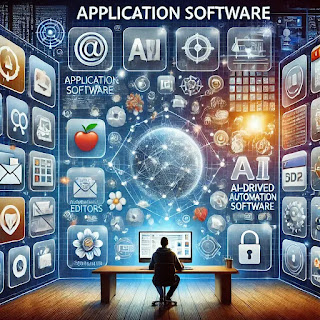Major Hardware Components and Functions of a Modern Computer System
Computers are an essential part of modern technology, enabling various tasks across different industries. Understanding the hardware components of a computer system is crucial to comprehending how they function efficiently. This blog post explores the major hardware components of a modern computer and their respective roles.
1. Central Processing Unit (CPU)
Often referred to as the "brain" of the computer, the CPU executes instructions from programs and performs calculations.
Modern CPUs contain multiple cores, allowing for simultaneous processing of tasks.
Higher clock speeds and advanced architectures improve processing efficiency.
2. Memory and Storage
RAM (Random Access Memory): A temporary storage area that holds data actively being used by the CPU for quick access.
Storage Drives: Hard disk drives (HDDs) and solid-state drives (SSDs) store permanent data and applications.
Cache Memory: Small, high-speed memory in the CPU that enhances processing speeds.
3. Input and Output Devices
Input Devices: Keyboards, mice, touchscreens, and microphones allow users to interact with the computer.
Output Devices: Monitors, printers, and speakers display and present processed data to users.
Peripheral Devices: Additional accessories like scanners, webcams, and game controllers enhance functionality.
4. Motherboard and Power Supply
Motherboard: The central circuit board that connects all components, enabling communication between them.
Power Supply Unit (PSU): Converts electrical energy into usable power for computer components.
Expansion Slots: Allow for additional hardware such as graphics cards, sound cards, and network adapters.
5. Graphics Processing Unit (GPU)
Handles rendering of images, videos, and 3D graphics.
Essential for gaming, video editing, and AI applications.
Can be integrated (built into the CPU) or dedicated (separate hardware component).
6. Cooling Systems
Fans and Heat Sinks: Dissipate heat generated by the CPU and GPU to prevent overheating.
Liquid Cooling: Advanced cooling solution for high-performance computing.
Thermal Paste: Helps transfer heat efficiently between components.
7. Network Interface and Connectivity
Ethernet and Wi-Fi Adapters: Enable wired and wireless internet connectivity.
Bluetooth Modules: Allow short-range wireless communication with peripherals.
Ports and Connectors: USB, HDMI, and Thunderbolt facilitate connections with external devices.
The Importance of Hardware in Modern Computing
A computer’s hardware components determine its capabilities, speed, and overall performance. As technology advances, hardware improvements drive faster and more efficient computing experiences.
Understanding the major hardware components of a modern computer helps users make informed decisions when purchasing or upgrading a system. Each component plays a crucial role in the computer’s overall functionality, and their integration enables seamless computing experiences.
What aspects of computer hardware interest you the most? Share your thoughts in the comments below!
References
Patterson, D. A., & Hennessy, J. L. (2017). Computer Organization and Design: The Hardware/Software Interface. Morgan Kaufmann.
Stallings, W. (2019). Computer Organization and Architecture. Pearson.
Harris, D. M., & Harris, S. L. (2012). Digital Design and Computer Architecture. Morgan Kaufmann.
Intel. (2023). Processor Technologies and Performance Overview. Retrieved from https://www.intel.com
AMD. (2023). Graphics Processing and CPU Innovations. Retrieved from https://www.amd.com
NVIDIA. (2023). GPU Architecture and Parallel Computing. Retrieved from https://www.nvidia.com



Comments
Post a Comment